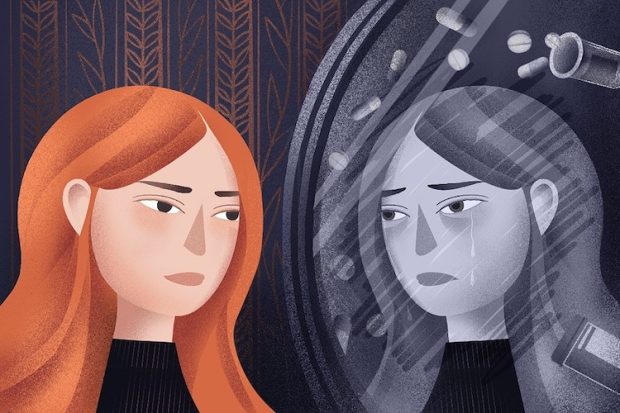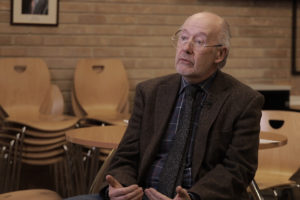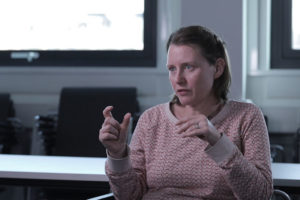Bipolar Disorder
Psychiatrist Guy Goodwin on the causes of bipolar disorder, why manic episodes are so dangerous and what medic...
Working with children and young people as a therapist and as a counselling psychologist has been some of the most challenging and fun parts of my work as a therapist. I think that combination of working with young people who have so much going on within their lives, and then developing and changing almost as you watch them if you’re in a longer-term relationship with them, becomes such a an interesting and rewarding kind of process. For me there’s something very interesting about working with a client group that I always feel as a culture we don’t fully understand yet. We talk about children and adolescents as if their terms are the fixed, and yet historically they’re still quite new arenas for us. A hundred years ago adolescent (people may be between the ages of 11 and 16) wouldn’t have necessarily have been embedded within an educational system. One of the identifies of adolescence is that shift from thinking about individuals who are now in full time education, who previously would have been in full-time work at that time.
I think there’s a sense that we’re still coming to terms with what does that mean as a culture, what are we doing with these individuals. It’s almost as if we think about schools, it is the schooling process their release as an opportunity to almost inform people about educational facts, or to prepare people for their future lives. The counselling process fits into that, it is about whether or not were supporting the social and emotional kind of aspect of a person’s development. Realistically it becomes very important to see young people as having multiple needs. I think there is this need for education or academic attainment that becomes a very important part of where people are going in their lives. But then this social and emotional aspect needs to run concurrently.
If we look at the figures within the UK, commonly it is cited that one individual out of every 10 is viewed as having a serious mental health issue that may benefit from further support. I think it’s not like there’s a small number of people who may benefit from these more targeted interventions such as counselling. That might be contrasted to interventions that run alongside, counselling the whole school interventions, where people may do classes about emotional health. In the UK we have a scheme called philosophy for kids. These activities really encourage young people to think about who they are. That may complement or may help them understand their own self-concept.
All of these elements really fit within that realm of seeing people as a biopsychosocial being. I guess young people have biological changes that are going on throughout the period of being from 4 to 25. However we delineate adolescence. There’s a huge amount of physiological changes that go on including puberty and becoming sexually mature individuals. They have a society that they have to navigate: whether it’s friendship groups, or families that they live within and beyond, the kind of going into the Internet and these sort of communities that they’re commonly engaging with, alongside the psychological aspect as well in which individuals are maturing and becoming more static in their understanding of their self, and understanding how they want to be in the future. This culmination of really thinking about the biological changes, psychological changes and the social impact really is a difficult period for some individuals. It means that having extra therapeutics support could be of help.
In addition to also understanding what adolescence is, there’s also this sense of what are we doing as therapists. Historically there was almost a tradition where we said: “Here’s an adult service and we will create that, create a youth setting “. I think increasingly we’re now acknowledging that that’s not always the best way forward, that there may be something distinct and unique about working with young people, that needs a different type of service. So, therapists or therapeutic services with young people are often about challenging them, to say what is an accessible service.
It goes into the territory of really thinking right from the outset that when we receive a referral about a young person, it may be that we have an angry young man or an overemotional young woman in terms of the way that people describe this person. There’s something about not taking that for granted really and thinking that we need to meet with that person, we need to ask them: “Well, do you want to be in counselling? What reasons do you want to be in counselling?” and taking it seriously, that a young person will have an opinion about this, rather than necessarily just taking for granted that the referral message that we’ve got, and also taking seriously that every young person says that they don’t want to be in therapy. I think it is important that a person has a choice and that it’s really their option of whether or not they will engage in therapy. When we’ve got through that, there’s something about creating the accessible services themselves.

So, another movement is really about creating services in places that young people want to go to. Some of the service historically may have been typically within health service settings, where a parent or someone may have had to take that individual to the clinic for support. I think increasingly there’s a move to create services within settings where young people commonly go: maybe school-based counselling or even online therapy is very much a developing area. That is challenging to a lot of professionals who I think typically want more control over the work in which we are engaging in. There are the settings and they are taking the young person’s voice seriously. When we are with young people about a need to be responsive to that type of issues that a person is bringing. Rather than taking a one-size-fits-all-approach to therapy, we need to be being creative and responsive.
Some of the work that I did with a young man wasn’t about sitting with one person here and one person here, and expecting people to talk about their problems. It was about creating a song that reflected their challenges that they were encountering in the world. Commonly in the youth counselling literature you might see people using our work or different forms of expression as a way to encouraging people to explore themselves and understand the world in which they’re encountering. But then the other bit is also not taking things for granted, at the other end of the therapeutic relationship as well, because we feel that something has gone right, that it’s continually going right in session one, session two, in session three and trying to have a conversation with the person we’re meeting to check out whether or not we’re in the right sort of territory that they want to be.
Some American psychologist talked about the idea of learning to fail well as a therapist. I think being able to hear and talk with a young person and be opened to the conversation that may encourage people to say: “Actually this isn’t working for me. Can we do it differently?” or “I’m having trouble with my maths homework today and it’s distracting me from thinking about things. Can we talk a bit about that?” It might not necessarily seem core to a therapist at that point in time, but I think, being able and willing to be flexible, and respond to some other issues can be really important for a young person to create the facilitative warm relationship, that they feel they can trust the therapist enough, so they maybe continue talking in the future.
I guess, bringing all of that together, like combination of really thinking about valuing the young person’s voice and trying to hear them throughout, whether or not do they want to be in therapy, how do they want therapy to be while they’re there, and did therapy work for them or was it their perception that it was a useful facilitative space, become a paramount thinking about what makes a good young person service for me.

Psychiatrist Guy Goodwin on the causes of bipolar disorder, why manic episodes are so dangerous and what medic...

Neuropsychologist Barbara Sahakian on cognitive training, areas of the brain that get affected in Alzheimer's ...

Psychologist Lauren Stewart on earworms, their features and function